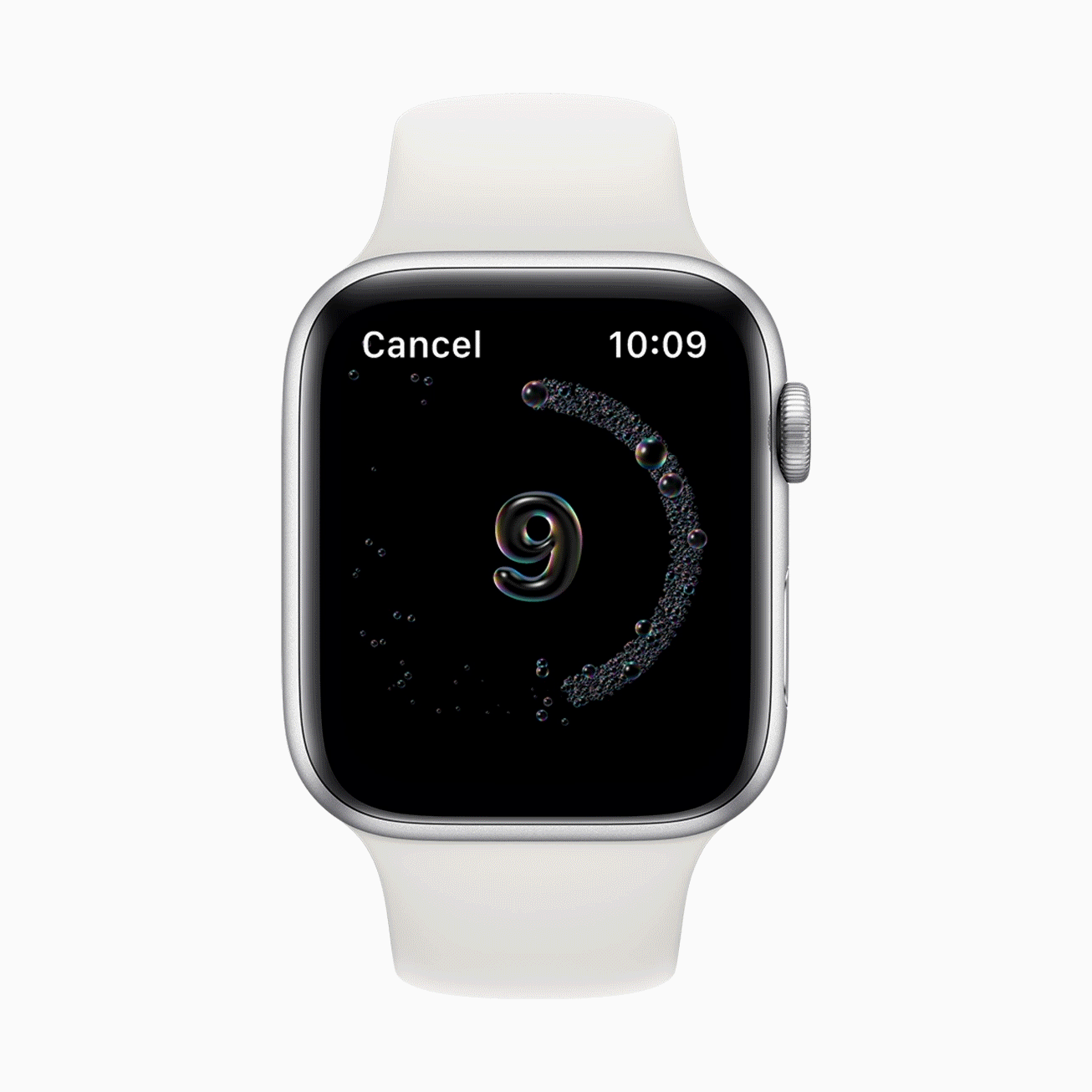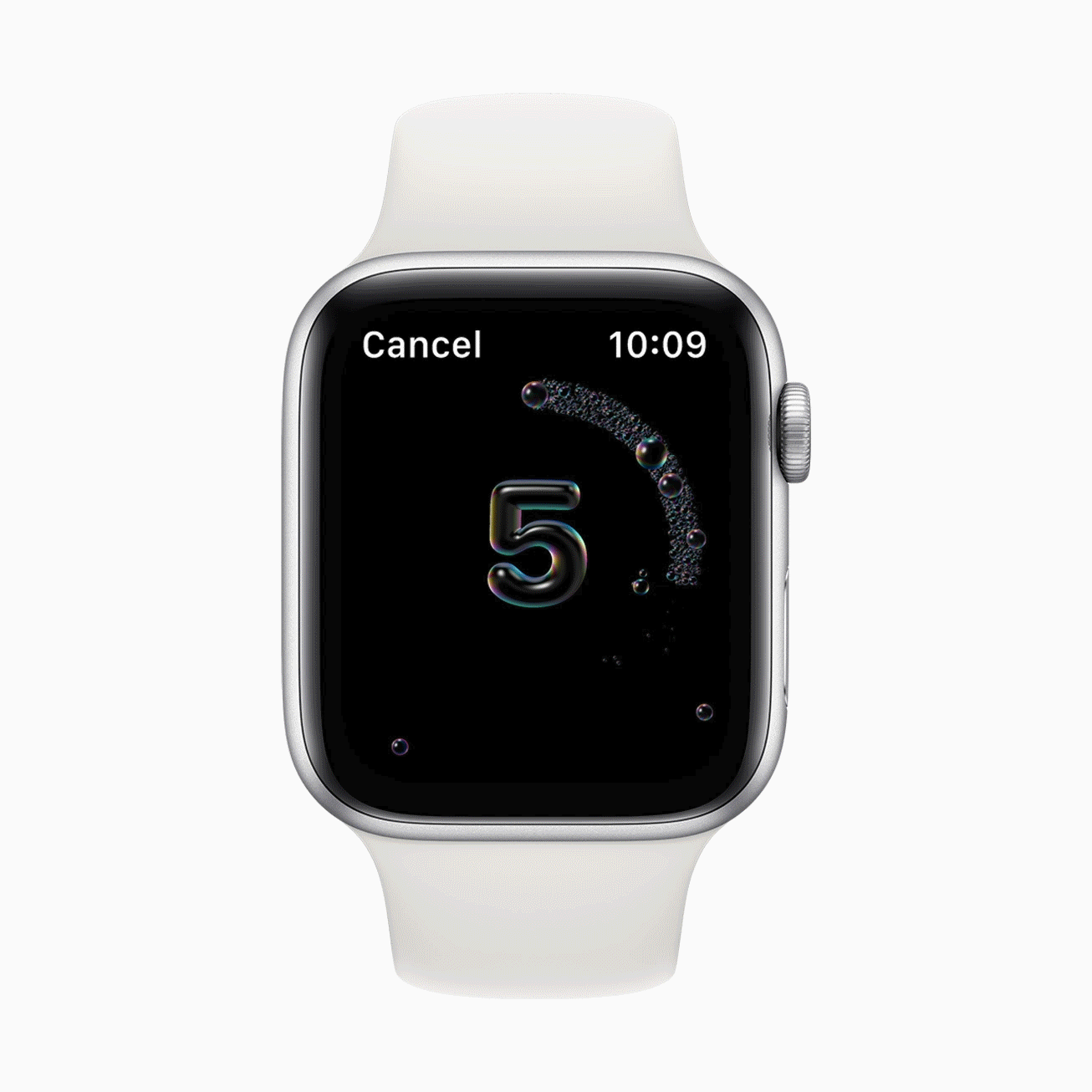Handwashing for the Apple Watch happily slotted alongside face masks for Memojis in the list of COVID-19-related features the company introduced at last week’s WWDC keynote. It’s a pedestrian action, something we take entirely for granted the several times a day we do it. Over the past five months, however, handwashing has taken on a kind of central importance to our daily lives — something to focus on and obsess over.
We all read the WHO and CDC guidelines and shared (and perhaps even created) some of the millions of song lyric memes highlighting the proper length of time required to sufficiently clean one’s hands and avoid virus transmission. We’ve all also become painfully aware of just how long 20 seconds can feel when you’re standing in front of the bathroom sink.
Unlike other rush initiatives undertaken by the company once the virus hit, however, the forthcoming Apple Watch handwashing app wasn’t built overnight. The feature was the result of “years of work,” VP of Technology Kevin Lynch told TechCrunch. In typical Apple fashion, the product was a result of years of trial and error, according to the executive.

Image Credits: Apple
Certainly it’s not the first smartwatch app to tackle this one banal action. Samsung was quick to the market to introduce a Galaxy Watch app designed for users wash their hands for the allotted time. But Apple’s version slots alongside such health features as the Noise app, and leverages the device’s built-in sensors to provide clever applications that contribute to the wearable’s overall health focus.
The feature, which is built directly into the forthcoming version of watchOS, is designed to work like fitness tracking in a number of ways. For starters, if the user opts into it, it’s designed to automatically trigger when handwashing is detected, starting a countdown timer of 20 seconds. The accelerometer is the key piece of hardware here, waiting for the specific handwashing pattern — which apparently adopts a number of different methods, depending on who’s actually doing the scrubbing.
The system uses machine learning models to tackle different methods, but the system gets an additional nudge from the Watch’s microphone. Along with motion, the app listens for the sound of running water. Even that’s not enough, though — after all, eco sinks have become increasingly popular, meaning that there’s often less water sound to be listening for. The sound of squishing soap takes care of that last bit. It’s got a unique enough audio signature so as to confirm that handwashing is taking place.
The feature flashes images of soap bubbles and buzzes the watch’s haptics to encourage the wearer to go the distance — offering “polite encouragement” if they pause. Like fitness tracking, that information is recorded in Apple’s health app. Again, what might otherwise feel like a silly little feature is suddenly taking on a much deeper importance as suddenly we all find ourselves obsessing over germ transmission.
The feature inadvertently joins a number of other COVID-19-related initiatives from Apple introduced over the past several months. The company has donated masks and built face shields and been a key player in contact-tracing initiatives.

Image Credits: Apple
On the Watch front specifically, it has opened remote usage for doctors looking to monitor patients’ ECG readings without risking exposure to the virus for either party. Apple currently makes no claims about the Watch’s potential for helping to diagnose the virus, however. “While we haven’t studied specifically how Apple Watch can track COVID, we’re happy to support the research the medical community is doing. We really support their initiatives by enabling our colleagues in the space, and we’re excited to see what they learn,” Apple’s VP of Health, Sumbul Ahmad Desai, tells TechCrunch.
The company doesn’t have anything specific to share on that front, at the moment, but it’s easy to see how researchers would be interested in leveraging such a widely used wearable in the detection and diagnoses of such a viral and deadly disease. Back in May, Fitbit announced that it was in the early stages of working with researchers on precisely that.
from Apple – TechCrunch https://ift.tt/2CLgQja

Comments
Post a Comment